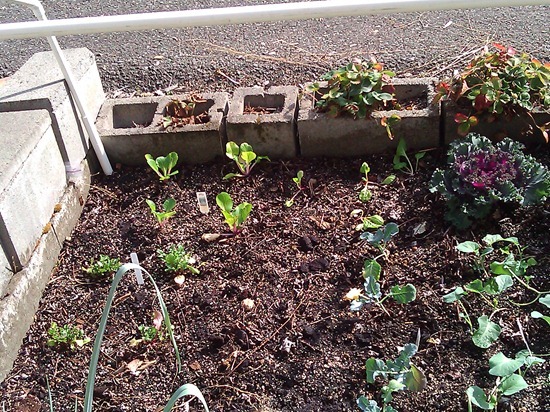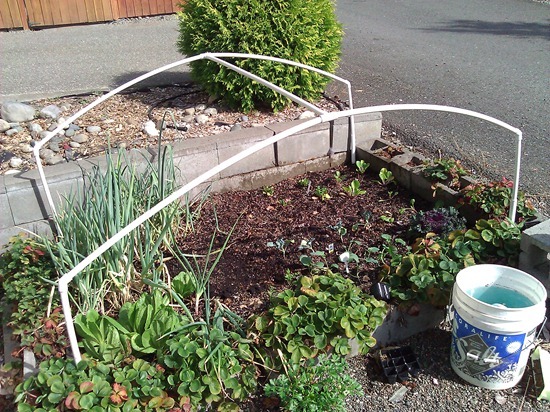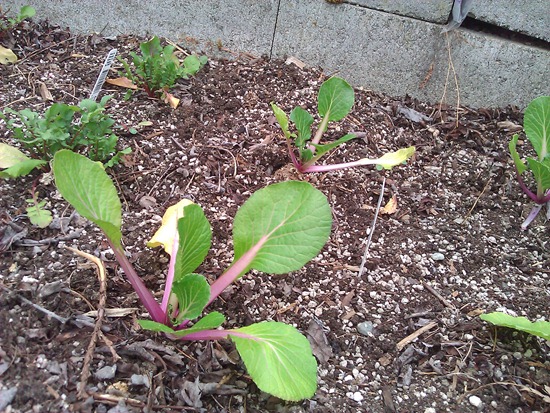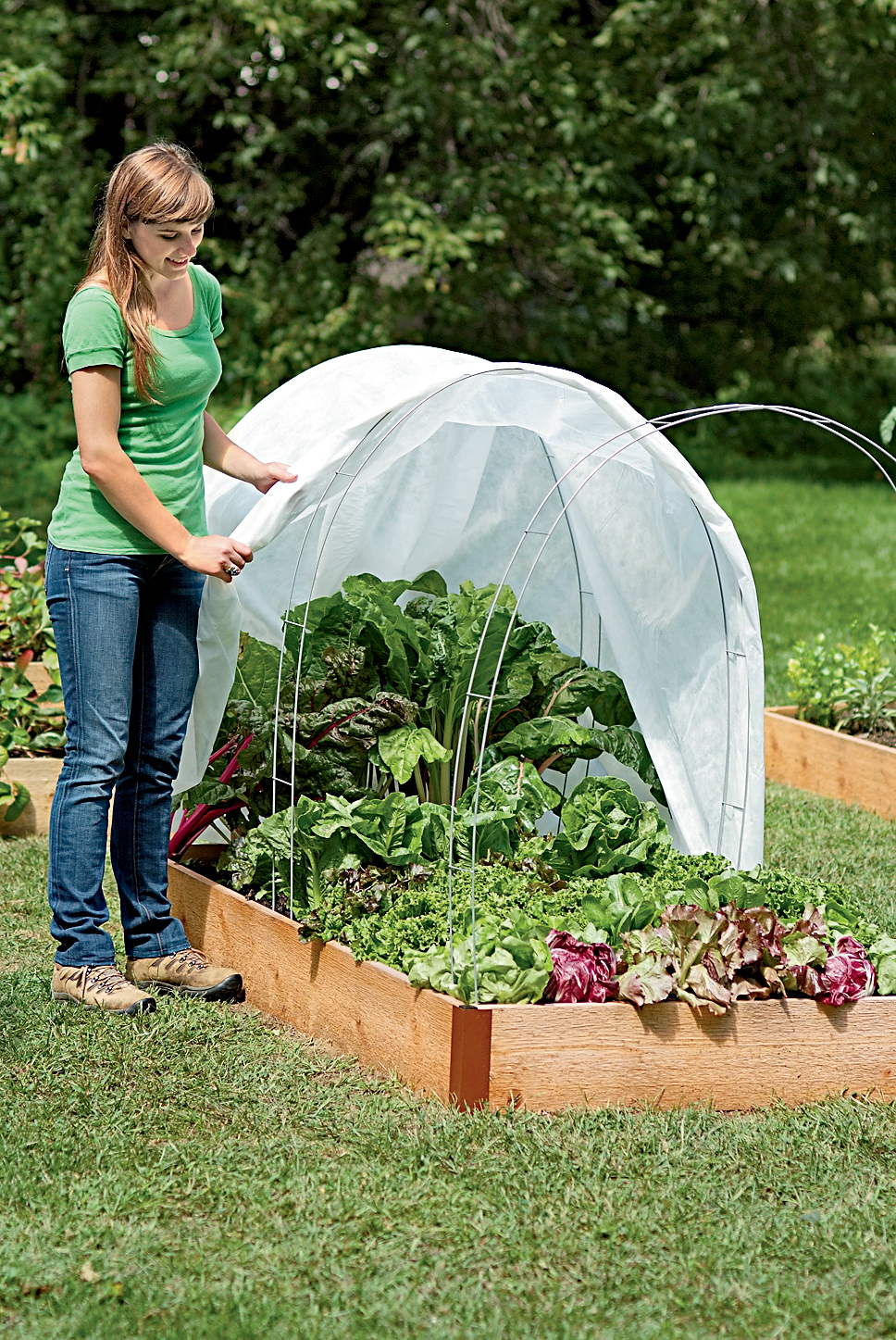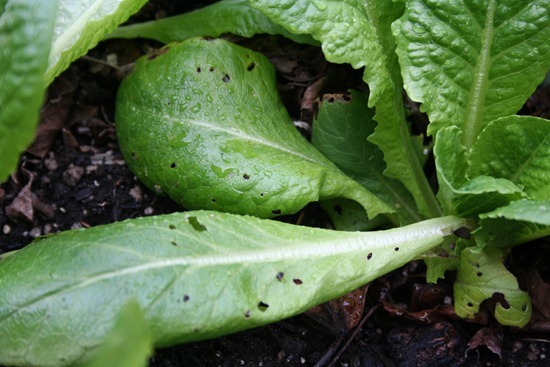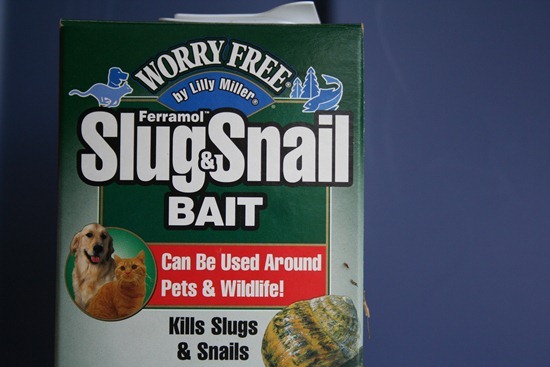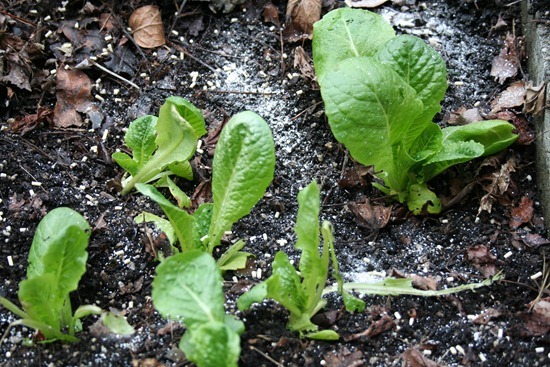Nutrient density of vegetables in your garden
10.9 years ago broccoli, leaves, lettuce, nutrients, parsley, pumpkin, Uncategorized

Just out of curiosity I got my hands on the USDA food database and had a little fun in Excel and the results were pretty interesting. Assuming I wanted to figure out what vegetables I could grow in my garden had the highest nutrient density. I wrote a formula for each nutrient from Vitamin A to Zinc what percentage rank across all of the foods did the item have. I then summed up these percentages based on 100 calories consumed to create an overall score and grouped by average across the categories as a “Nutrient Density Score.”
The results were pretty interesting and discovered some new plants I should try consuming this year.
Top 10 most nutrient dense vegetables
| Rank | Vegetable | Score | Nutrients with significant content |
| 1 | Pumpkin leaves | 24.0 | Potassium, Phosphorus, Magnesium, Leucine, Tyrosine, Threroline, Isoleucine, Phenylalanie |
| 2 | Spinach | 23.4 | Calcium, Potassium, Phosphorus, Zinc, Folate, Magnesium, Beta carotene, Tyrosine, Threroline, Isoleucine |
| 3 | Mustard Greens | 23.0 | Calcium, Potassium, Phosphorus, Vitamin C, Vitamin A, Folate, Beta carotene, Tyrosine, Arginine |
| 4 | Broccoli | 23.0 | Calcium, Phosphorus, Zinc, Pantothenic acid, Folate, Aspartic acid, Glutamic acid, Valine |
| 5 | Asparagus | 22.6 | Phosphorus, Potassium, Zinc, Copper, Selenium, Niacin, Folate, Aspartic acid, Glutamic acid |
| 6 | Turnip Greens | 22.6 | Calcium, Potassium, Beta carotene, Tyrosine, Threroline, Isoleucine, Phenylalanie, Leucine, Valine |
| 7 | Pak-Choi | 22.3 | Calcium, Phosphorus, Potassium, Vitamin C, Folate, Beta carotene, Glutamic acid, Isoleucine, Alanine |
| 8 | Swiss Chard | 21.5 | Magnesium, Phosphorus, Potassium, Copper, Beta carotene, Isoleucine, Phenylalanie |
| 9 | Green Leaf Lettuce | 21.5 | Phosphorus, Potassium, Manganese, Vitamin A, Beta carotene, Isoleucine |
| 10 | Beet Greens | 21.4 | Calcium, Phosphorus, Potassium, Zinc, Copper, Manganese, Pantothenic acid, Beta carotene |
As you can see everything in the top ten is at least the color green with most of the plants being leafy vegetables. Some honorable mentions rounding up the top 20: Chives, Kale, Zucchini, Corn salad, Okra, Cauliflower Greens, Parsley, Mushrooms, Collards, Red leaf Lettuce.
So as you know vegetables contain the most nutrients the shorter the time between they are harvested and then consumed so anywhere you can shave off a few hours of this process is to your advantage, so to benefit the most for the nutrients in your food some of the above plants are some great options.
So how about the bottom, or the top ten least nutrient dense vegetables in your garden?
Bottom 10 least nutrient dense vegetables
| Rank | Vegetable | Score |
| 1 | Indian Squash | 8.4 |
| 2 | Shiitake Mushrooms | 9.4 |
| 3 | Potatoes | 9.5 |
| 4 | Jerusalem Artichoke | 9.6 |
| 5 | Parsnips | 9.7 |
| 6 | Lemon grass | 9.7 |
| 7 | Pumpkin flowers | 10.3 |
| 8 | Arrowroot | 10.8 |
| 9 | Tomatillos | 10.9 |
| 10 | Rhubarb | 10.9 |
Now don’t get me wrong many of the plants in the above list may still have plenty of nutritional value it is just that compared to the competition they lack the shear concentration of nutrition and the diversity across the spectrum.
I know for me I am planning on trying some pumpkin leaves this year. Sounds like you just dice them up and sauté with some oil and throw in some garlic at the end and sounds like the leaves should actually be pretty sweet tasting…I will be sure to post of the success or failure of cooking pumpkin leaves.
What I am growing in my winter garden
12.6 years ago bok choy, cold season crops, garlic bulbs, leeks, lettuce, onions, winter garden
I normally get burned out over the spring/fall and don’t do much for the fall/winter season. This year I decided I want to have a nice selection of winter veggies so I am going all out and start my winter garden.
In the garden now are kale, broccoli, bok choy, carrots, spinach, romaine lettuce, arugula (one of the most profitable vegetables), bunching onions, garlic, and leeks. I wanted to grow Brussel sprouts but I should have started those about 4 month ago.
I grew the lettuce, broccoli, onions, and leeks from seeds in the grow box and transplanted them a few of weeks ago. The bok choy, kale, and arugula were an impulse addition when I saw the plants on sale and struggling at my local grocery store.
All of these plants should do pretty well with the mild winters we get here in the Pacific Northwest…but our hard rains and occasional snowfall could lead to their downfall. For this reason I came up with this structure which when the rains and/or low temperatures come I will cover with 2.5mm plastic sheeting. Though I plan on adding one more set of cross pieces to prevent sagging in the middle, I consider this design a bit of a hybrid between row covers and a full blown hoop house.
This will provide plenty of space for the plants to grow and ease of getting under the structure to harvest in the rain while not large enough to hopefully not catch a little wind and sail away.
I am excited to continue to collect my harvests all year round.
How to start a winter vegetable garden
12.6 years ago broccoli, cold season crops, fall crops, freezing, leeks, lettuce, onions, spinach, winter garden
Why let your gardening season end, with a little creativity there are many vegetables that can continue growing right through winter. I find this fun as wells of a rewarding challenge bringing in some great produce from my garden all year round.
Choosing your winter vegetables
First we need to determine what vegetables to grow, given temperature and lack of light will be a reality we will have to go with the colder tolerate spring/fall options. below are some of my favorites and their typical hardy temperatures.
Arugula: Hardy up to 15F (-9C). Not only is this the most profitable vegetable to grow per square foot it is a tasty and nutritious addition to your garden salads a very good source of vitamin A/C/K, folate, calcium, iron, magnesium, phosphorus, potassium and manganese.
Beets: Hardy up to 20F (-7C). With beets you have a couple of options, eat the roots which are an excellent source of folate, potassium and manganese. The other option is to eats the beet greens which are an excellent source of vitamin A/C/E/K/B6, thiamin, riboflavin, calcium, iron, magnesium, potassium, copper and manganese
Bok choy: Hardy up to 24F (-4C). Bok choy is a great source of vitamin A/C/K/B6, riboflavin, folate, calcium, iron, magnesium, potassium and manganese.
Broccoli: Hardy up to 10F (-12C). So many options here and great eat fresh and if you get too much at once it is easy to freeze your excess crops while being a great source of Vitamin A/C/K/B6, folate, potassium and manganese.
Brussels Sprouts: Hardy up to 0F (-16C). If the thought of Brussels sprouts sicken you, don’t give up on these until you try some fresh from your garden. As an added bonus this is a great source of vitamin A/C/K/B6, thiamin, folate, potassium and manganese.
Cabbage (Winter): Hardy up to 5F (-14C). Use for raw for coleslaws or cooked in stews or soups to add some vitamin C, folate, potassium and manganese to your next meal.
Carrots: Hardy up to 15F (-9C). Great in salads, stir-fry, or raw as a quick snack and is also a great source of Vitamin A/C/K and potassium
Collards: Hardy up to 24F (-4C). Great sautéed with a little oil with salt and pepper and a great source of vitamin A/C/E/K/B6, riboflavin, folate, calcium and manganese.
Endive: Hardy up to 5F (-15C). Great addition to salads as well as making or a great addition to sounds. Endive is high in vitamin A/C/K, thiamin, riboflavin, folate, pantothenic acid, calcium, iron, potassium, zinc, copper and manganese.
Kale: Hardy up to 8F (-13C). Sauté as a great side or even bake to make some delicious Kale chips and is high in vitamin A/C/K/B6, calcium, potassium, copper and manganese.
Kohlrabi: Hardy up to 15F (-9C). The taste and texture of kohlrabi are similar to those of a broccoli stem or cabbage heart, but milder and sweeter, with a higher ratio of flesh to skin. The young stem in particular can be as crisp and juicy as an apple, although much less sweet1. Kohlrabi is a great source of vitamin C/B6, potassium, copper and manganese
Garlic: Hardy up to 8F (-13C). One of the most useful aromatics to use in your kitchen and high in vitamin C/B6 and Manganese.
Leeks: Hardy up to 8F (-13C). Great additions/bases for many soups and stocks. Has flavor of onion though not quite as overpowering. It is also a great source of vitamin A/C/K, folate and manganese.
Lettuce: Hardy up to 24F (-4C). Staple for a quick winter salad. Choose varieties with darker leaves for more nutritious goodness of vitamin A/C/K, thiamin, folate, iron, potassium and manganese.
Onions (Bulb): Hardy up to 0F (-18C). Plant these out this fall/winter for some nice large bulbs next spring summer. These provide a great deal of versatility and vitamin B6, folate, potassium and manganese, and a very good source of Vitamin C.
Onions (Bunching): Hardy up to 10F (-12C). Plant a bunch of these and your garden and they will continue to spread and provide additional produce to your kitchen. With just a little bit of protection you can have onions all winter.
Peas: Hardy up to 35F (2C). Can be shelled and cooked and eaten as is or added to some nice soups in the wintertime or kept in the shells and eat raw or a great addition to a nice stir-fry. Peas also provide vitamin A/C/K, thiamin, folate, iron and manganese.
Spinach: Hardy up to 8F (-13C). Just recently got turned back to eating spinach, previously just used in an occasional salad but now I add to omelets every morning for some great taste but are also packed with nutritional potency being a very good source of protein, vitamin A/C/E/K/B6, thiamin, riboflavin, folate, calcium, iron, magnesium, phosphorus, potassium, copper and manganese.
Swiss Chard: Hardy up to 20F (-7C). Vitamin A, Vitamin C, Vitamin E (Alpha Tocopherol), Vitamin K, Riboflavin, Vitamin B6, Calcium, Iron, Magnesium, Phosphorus, Potassium, Copper and Manganese.
When can you actually grow these vegetables
Now that found the vegetables you want to grow now is a good time to check those hardy temperatures of the vegetables you have chosen compared to your average winter temperatures. If your average low for the day is going to fall at or below that limit you may want to consider skipping that one or invest in a little protection.
Using a site like WeatherSpark, you can determine what your average low is for your area and then determine what vegetables you can grow during the winter. As you can see above on average in my area the average low is 36F which allows me to grow most of the cold season vegetables mentioned above. Though it is possible to get an occasional cold streak which cold mean death to my vegetables over the winter.
By using some row covers you can provide a little extra temperature (5-10F) depending on the thickness of the plastic and the volume of air you are attempting to keep warm. The thicker the plastic the better the temperature retention though allows less light to get through. For my area I am going with 2.5mm which should provide some decent protection while still allowing needed light in. When things really go bad you can also supplement with a light blanket at night and/or a couple strings of regular old Christmas lights (no LEDs for this application) to provide a few more degrees.
How to start your vegetables
Though your plants may grow well in the low temperatures germination can be incredibly slow at lower temperatures even for cold weather plants. For this reason you should start your vegetables indoors and bring them outdoors with some minimal hardening off.
As a general rule here are the plants you should be able to start as seeds in the ground now (September):
- Carrots
- Garlic
- Lettuce
- Onions (sets for green onions, seeds for spring onions)
- Radishes
- Spinach
Other plants should be started indoors and planted out as starts. These can be brought out right now so check you local grocery store…this time of year I have found 4-packs of winter vegetable starts as low as $0.25 as the stores are making room for the Halloween pumpkins coming in. Since you will want a continuous harvest you can also start seeds now and every few weeks for a constant supply of winter vegetables all winter long.
Summing things up
By taking maturing and harvest time into account and creating continual planting you should supply yourself with delicious and nutritious selection of vegetables all winter long. I was going to go into what I am growing this year…but this post is already getting long so will write about that later…
Slugs eating my lettuce
13 years ago lettuce, pests, slugs
Previously I did an entire post on deterring slugs from your garden, but I was so excited to get these romaine lettuce plants out of my grow box and into the garden I put off the slug prevention a little too long.
As you can see these guys are pretty little but they still can do some serious amount of damage in a short period of time. There are many methods to prevent slugs in your garden, but I went with methods based on materials I had on hand.
First I started with some Slug and Snail bait, this is more environmentally friendly kind which will not kill off the cats, dogs, birds in your neighborhood but when the slugs get a taste it will eliminate their appetite and/or encourage them to forage for food elsewhere.
After picking of the chewed on leaves which removed the slugs chewing on them from the garden, promotes a healthier plant, and gives the hides the evidence that this attack never happened. I also removed some of the leaf mulch around the plants to give the slugs a less optimal hiding place. I topped all of this up by sprinkling a 1/4 cup of egg shells around the plants which irritates the slugs delicate undersides to hopefully encourage them to look for lunch elsewhere.
